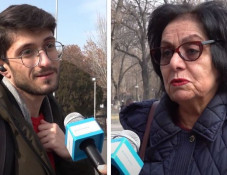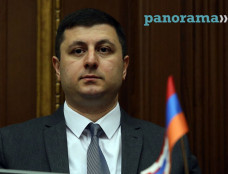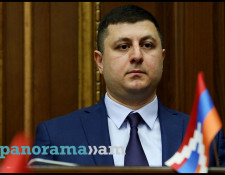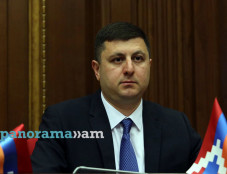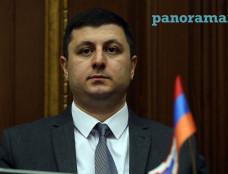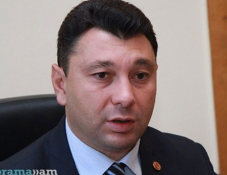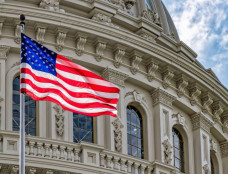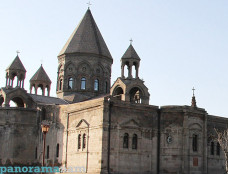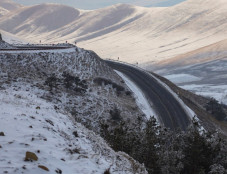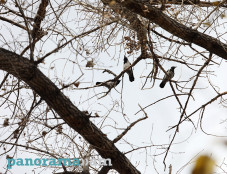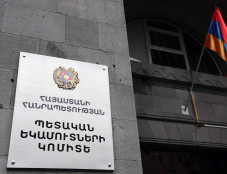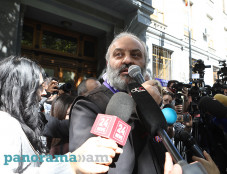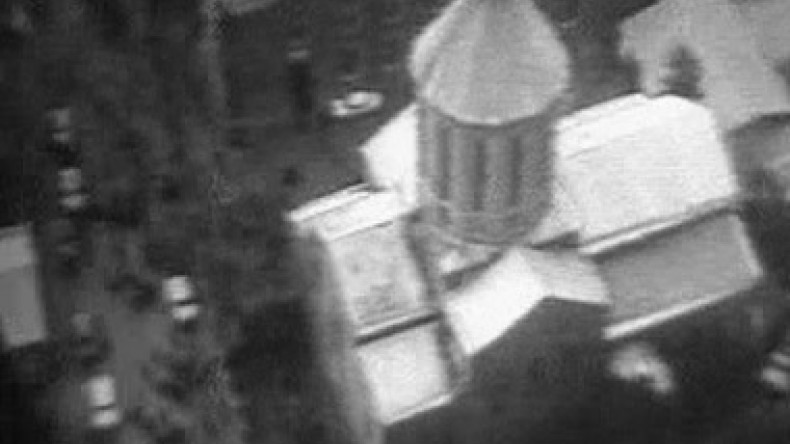
Participant of self-defense operations in Kirovabad: In critical situations, we always win if we are united
An exclusive interview by Panorama.am with representative of the Armenian Refugee Association AHAZANG Grigory Oganezov about Armenian self-defense operations during the massacres in Kirovabad in November 1988.
According to incomplete data, 18 people were killed in Kirovabad from November 21 to 27, 1988, 60 are listed as missing, 74 received grave injuries. Around 45 000 people were forcibly deported from Gandzak.
- We often talk about the Baku and Sumgait massacres but we know little about the heroic self-defense of Armenians in Gandzak which was called Kirovabad during the later Soviet Union period.
- During the Armenian massacres of 1988, I participated in self-defense operations in Kirovabad.
The Sumgait plot was used in Kirovabad, too. The town’s Azerbaijani and Armenian blocks were separated by a river, and the crowd, crossing the river, penetrated into the Armenian block, destroying everything in their path. The next day the local authorities were replacing the broken glasses and repairing the damages trying to hide the consequences. The same thing had happened in 1959: when Leninakan football team beat the local team in Kirovabad playing field, the Azerbaijanis sacked the Armenian block, and the next day the authorities eliminated the consequences. That is why we expected that the events would turn this way. Then Soviet troops appeared in the town, young servicemen who had no idea what was going on in the town.
- That is anti-Armenian speeches had begun long before the November massacres?
- In February already unconcealed anti-Armenian speeches were voiced on television, at institutions, we had to accompany our children to school and back home. Armenians were fired from their jobs. This tense situation lasted until 1988 November. From mid-November an alleged environmental protest was being prepared in Kirovabad’s Lenin Square, but the environmental slogans were shortly transformed into calls “Death to Armenians.” We managed to avoid high casualties in Kirovabad due to correct arrangement and coordination of operations. We were keeping a close eye on the events in other Azerbaijani regions where Armenian massacres were taking place.
- So in November already you were ready to hit back at the Azerbaijani pogrom makers. How was this process organized?
- We gathered in the church, established an initiating committee, got in touch with commandant Pyotr Polyakh who visited us immediately. Armenians were phoning the church from the town’s Azerbaijani block, asking for help, with the Azerbaijani pogrom makers having found out the addresses of local Armenians. The town had declared a curfew. We asked Polyakh to allow withdrawal of Armenians from Azerbaijani blocks at nights. On the first night we managed to withdraw nearly 70 families. We took them to the church. The refugees needed shelter, we had to provide medical aid to injured people, to feed the hungry. With joint efforts we managed to provide them with clothes, medicines, and food.
- Is there a documentation of the Armenian massacres in Kirovabad?
- We have collected all facts on the Armenian massacres in Kirovabad and delivered them to the Soviet leadership. These facts include statements by 1 300 families, around 5 000 people, while 50 000 Armenians lived in Kirovabad. We compiled lists of Azerbaijani pogrom makers who raped the Armenian women and killed the men. All these facts were registered at the military hospital, during the physical exam, and we have a certificate for each case. Around 70 injured people stayed in the church, another 300 had parts of their body amputated with our help. Town hospitals refused to admit them, what is more, Armenians receiving treatment at hospitals were forced out, for instance, the wife of the evening school headmaster was forced out of the hospital after she had her leg amputated.
- Did the Azerbaijanis burst into the Armenian block or they committed killings in their territory only?
- On the first day of November massacres the Azerbaijanis attacked the church, then they penetrated into the Armenian block, however, facing organized resistance, they fled to the Azerbaijani side. We immediately introduced explanations to the commandants on where and how to block the points leading to Armenian streets in order to prevent the Azerbaijani attacks. After we were deprived of phone communication, electricity and water, we asked for a walkie-talkie to keep in touch with the commandants. The initiating committee met every day to coordinate the operations. Every Armenian block and street organized self-defense.
- Were the Armenians evacuated from the town?
- No one had thought we would have to leave Kirovabad. However, after the earthquake in Armenia we realized that we could not get help from anywhere, and we fled on our own, with our own resources. The initiating committee stayed in Kirovabad from 1988 December to 1989 August and organized evacuations of the Armenians. They were leaving either for Armenia or Russia. There was a military unit in Kirovabad where planes were repaired, and together with Armenians, all Russians were also forcedly deported from there and joined us in the church. There were also Georgians there. These were not only Armenian massacres, but massacres of all non-Azerbaijanis. Azerbaijanis arriving from Armenia exchanged their apartments with the property of the Armenians in Kirovabad, they deceived Armenians, transferring their apartments in Armenia to several Armenian families simultaneously, after which many families were left homeless. On returning to Armenia, they saw other legal owners living in the apartment transferred to them also. The Armenians were transferred from the town by public transport vehicles arriving from Georgia, which were often robbed by the Azerbaijanis on the way. There were cases when passengers of Baku-Ijevan train were forced to get off the train at Kirovabad station and the train would not move on. The Azerbaijanis surrounded the train, demanding to transfer the Armenians to them.
- Who coordinated the Armenian massacres in Kirovabad?
- The local government. I have kept a recording of speech by second secretary of Kirovabad Jumshud Mamedov during a rally where he said that only 500-600 families were killed. Despite the facts were deliberately distorted and cut threefold, it sounded horrible. The local prosecutor’s office had registered the massacres in the period from November 21 to 27 because Kirovabad leadership made public just these data during anti-Armenian actions. We have kept a recording where an Azerbaijani confesses that they were forced to attend these rallies under the threat of being fired from job. The Armenophobic propaganda was on the highest level. All these facts were transferred to the Soviet Prosecutor’s Office and are kept at archives.
- Was this in fact the first organized resistance to Azerbaijani brutal crowd? Did it influence further developments?
- Kirovabad’s self-defense was an incentive for Karabakh. Cars arrived even from Stepanakert, delivering food to us. We felt that support. In critical situations, we, Armenians, always win if we are united. When the initiating committee was leaving Kirovabad finally, we locked the church and brought the keys to Etchmiadzin. We did not manage to take away the church property. We are preparing a letter to UNESCO to save the church and the Armenian cemetery from vandalism. Besides, I am making a book with all facts on the Armenian massacres in Kirovabad, official documents, recordings, and evidence.
- Every year you gather to commemorate the victims of Armenian massacres.
- Yes, we have installed a khachkar (cross-stone) in Tsitsernakaberd in memory of the Armenians who were killed in Kirovabad and in neighboring villages. We visit the khachkar on the last Sunday of November every year and lay flowers at the memorial. We are meeting at Surb Hakob Church in Kanaker-Zeytun community of Yerevan on November 27. Our priest, Ter Sahak, who also participated in self-defense operations in Kirovabad, will offer liturgy, then we will visit Tsitsernakaberd to lay flowers at the khachkar.


Newsfeed
Videos





